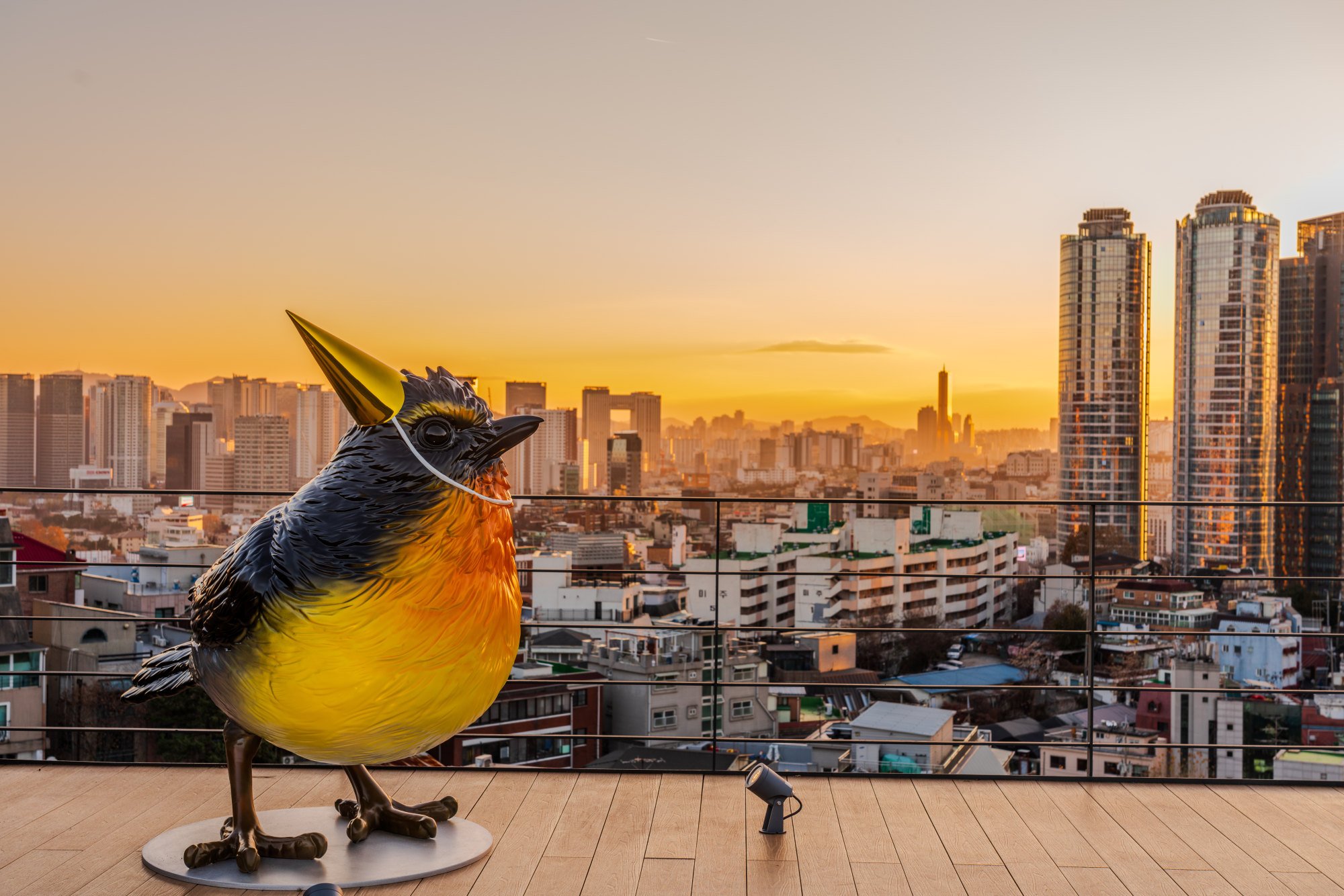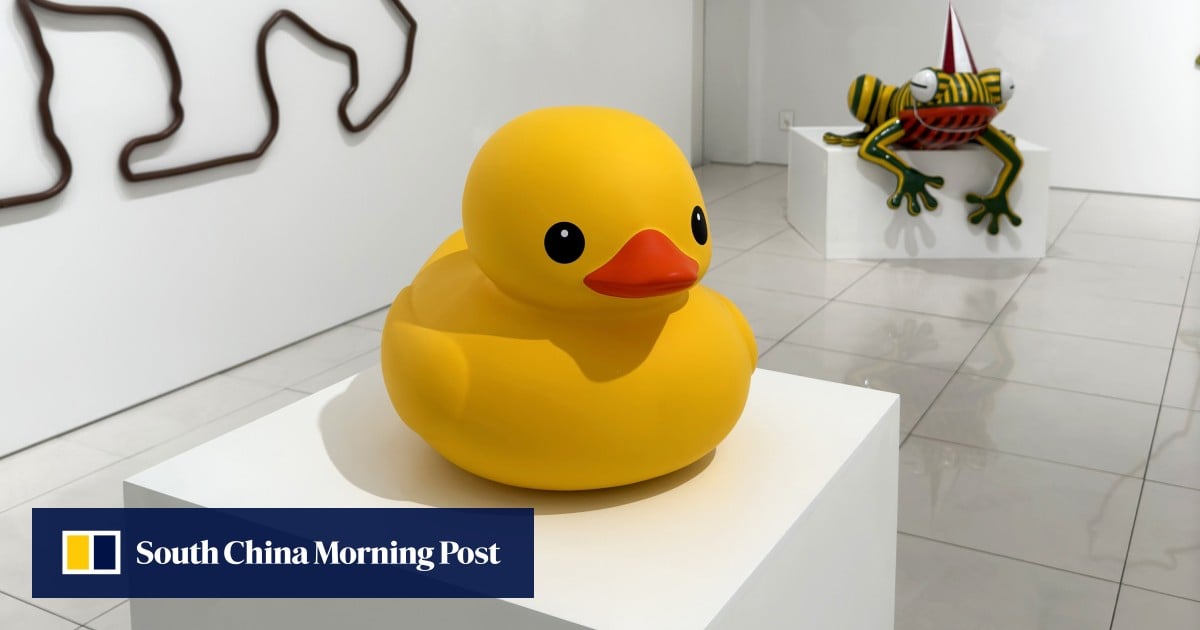Hofman, the mastermind behind these larger-than-life attractions that temporarily take over major cities, has returned to Korea – this time, to bring his vision indoors for his inaugural solo exhibition in the country, “Inclusive”, at Whitestone Gallery Seoul.
Two Chinese artists hold contrasting solo shows in Hong Kong gallery
Two Chinese artists hold contrasting solo shows in Hong Kong gallery
The gallery provides a much more confined space compared to his usual creative playground – the city itself – so to compensate, the artist offers the next best thing: scaled-down versions of his public installations.
The go-to motif for the Dutch artist’s supersized installations has long been instantly recognisable animals – or, to be more precise, the mass-produced toys or everyday objects in the shape of animals. But Hofman insists that his works have “never really been about animals themselves”.
“They’ve always been a metaphor for us humans,” he says.

His pieces can be likened to modern-day, sculptural versions of fables. The creatures inhabiting Whitestone Gallery Seoul represent everything from freedom to hope and inclusivity – values that have increasingly become palpable to the artist, whose self-assigned role has been to connect people beyond languages, culture and geography.
“People flock to and gather around these big sculptures. Then, they start conversing with each other,” he says, noting how the return of the Rubber Duck to Seokchon Lake almost a decade after its first appearance created – and brought back – collective memories for the audience.
“A generation grew up with that image and they really wanted to reconnect with it, and [by doing so] reconnect with themselves, with each other.”
The most salient feature of Hofman’s urban art projects is not their animal-inspired motif, but their sheer scale.
Whether you revel in the sight of these gargantuan installations or not, it’s impossible to take your eyes off them as their presence physically “disrupts” and redefines the very space they occupy.
“Size matters. When you blow up things, you (are bound to) look at it in a different perspective. Instead of us looking at it, it is now looking at us. So there is a shift in perspectives, which really intrigues me,” he says.
His oversized sculptures demand attention, prompting viewers to reconsider their relationship with the surrounding environment, thus adding a new layer of narrative.
“For example, I always call the Rubber Duck a yellow catalyst, because (just by existing) it asks for a narrative of your own. One person in Hong Kong told me that the duck seemed to expose how ugly the city’s skyline was (when it was in Victoria Harbour).
“Likewise, Seokchon Lake will never be the same in people’s eyes after the Rubber Duck has visited there.”
A sense of hierarchy or status also disappears when visitors place themselves in front of Hofman’s sculptures. They make everyone feel small – and in the end, equal.
“Whether you’re a politician or a restaurant worker or a journalist, you’re on the same level as anyone else ,” the artist says.
“Inclusive” runs until January 7, 2024 at Whitestone Gallery Seoul.

